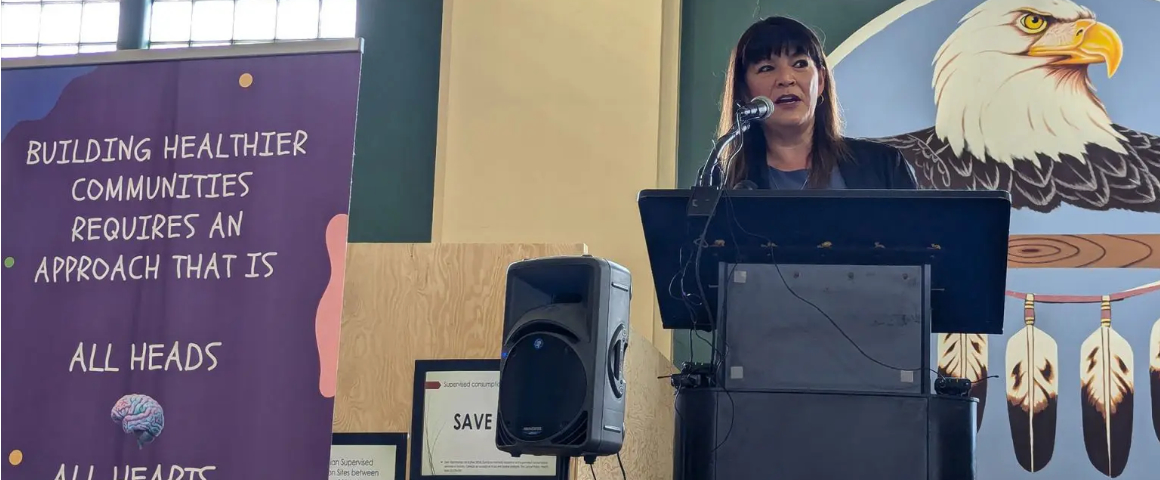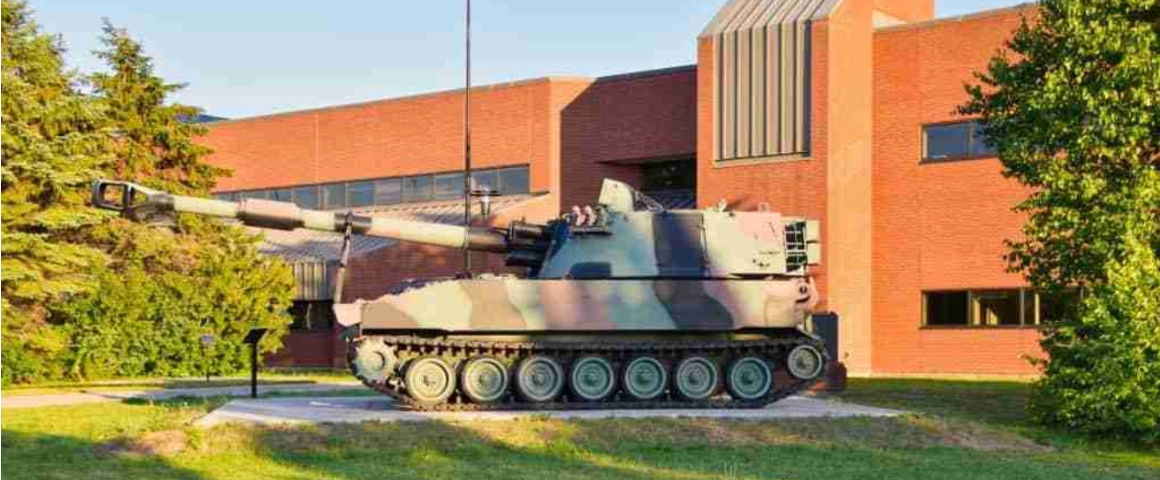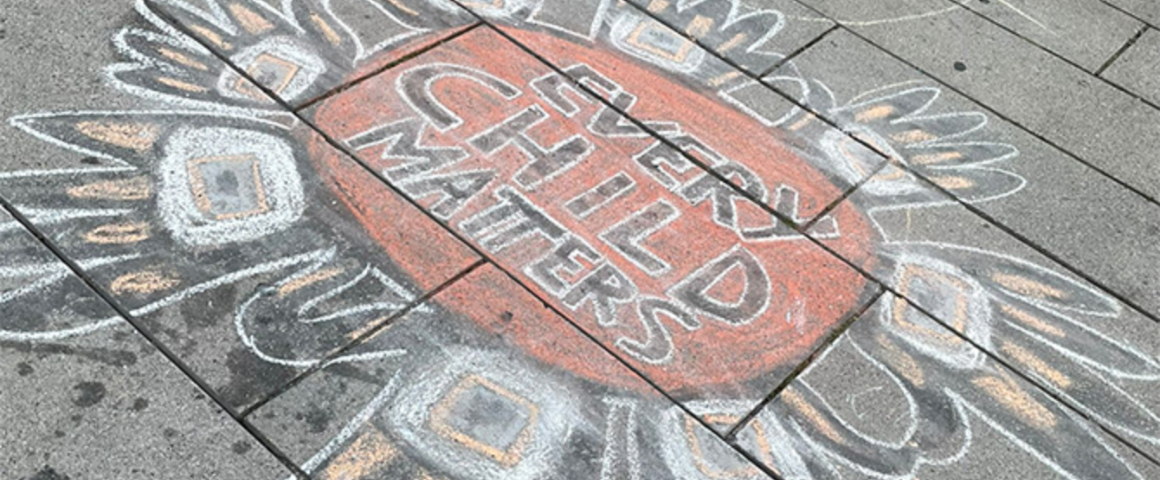By Irene Bindi
In a Canada-wide first and groundbreaking advance in healthcare for Manitobans, the country’s very first Indigenous-led, peer-supported Safer Consumption Site will be opening in Winnipeg in 2025. The announcement took place on July 12 at the Aboriginal Health and Wellness Centre of Winnipeg, one of the project leaders.
Last year, there were 445 deaths counted in Manitoba due to drug poisoning. In January alone there were 56 deaths – almost two per day. Guided by people with lived experience, the announcement of the site is the culmination of two years of concerted work by community advocates, and many more years of community advocacy before that.
The new site plan for the Indigenous-led Safer Consumption Site (SCS) is rooted in a harm-reduction approach that will offer trained staff to intervene and help prevent overdoses, a safer space for people to bring their own supply, needle exchange, on-site testing and new equipment to help limit the spread of blood borne infections, connection to vital health and social services, and “an environment rooted in compassion, dignity, respect and love.”
The SCS community partner cohort includes the Aboriginal Health and Wellness Centre, Sunshine House, Ka Ni Kanichihk, Main Street Project, Manitoba Harm Reduction Network, and Substance Consulting. The 2024 provincial NDP budget included $2.5 million for a permanent supervised consumption site.
The Aboriginal Health and Wellness Centre emphasized “cultural continuity in care,” and the fact that the Indigenous-led site will be an example of decolonized healthcare. The Indigenous-led, peer-supported site has a five-pronged model that includes drop-in, primary care, mental health supports, day programs and connectivity with the Rapid Access to Addiction Medicine (RAAM) program.
The West Central Women’s Resource Centre said that such a project requires an “all heads, all hearts, all hands-in approach,” and emphasized how crucial the new Indigenous-led project is, and how dire the drug poising crisis:
“We have lost so many people in the years this has been debated and blocked. Additionally, we are concerned. This morning alone, in the first hour NEWC [North End Women’s Centre] opened, we supported two people through an overdose due to toxic drugs. This is a regular occurrence at NEWC and many other agencies, and we know it will not end anytime soon. We will continue to advocate alongside our partners for more safer consumption spaces, mental health supports, substance use support and access to care that is harm reduction based, barrier free and anti-racist.”
Information made available at the announcement event included Heath Canada data for safer consumptions sites. From 2017 to 2024 there were 4,141,984 individual clients who visited the sites, and 470,076 resulting referrals connecting people with health services and social services. Over a four-year period from 2020–2024, 38,971 overdoses were responded to at SCSs with 16,180 of those requiring the use of naloxone, and there were zero fatal overdoses at SCSs.
The years of work that went into the fruition of this project announcement cannot be overstated. Workers at Sunshine House, a Winnipeg-based social inclusion and harm reduction resource centre that takes a “proactive decolonization” approach, pointed out that community members have been preventing overdoses of other community members since the beginning of drug circulation. Sunshine House has been running the extremely successful Mobile Overdose Prevention Site (MOPs) since October 2022. Their work, and the work of other harm-reduction based community organizations and individuals, has saved thousands of lives.
Together with Manitoba Harm Reduction Network, Main Street Project, Central Women’s Resource Centre and the Manitoba Health Coalition, Sunshine House is a member of the SaferSites Coalition “comprised of organizations and individuals who support the implementation supervised drug consumption sites.” MOPs provides a space to use substances; harm reduction supplies; narcan/naloxone; access to coffee, water and sometimes snacks; and rapid HIV tests. It also has staff available to talk about community members’ needs and help with referrals to other resources.
Over a period of one year, from the fall of 2022 to 2023, MOPs had 26,154 visitors. Not a single one of 2023’s 445 overdose deaths happened at MOPs. From October 2022 to August 2023, MOPs was also able to reverse 19 overdoses. Furthermore, 5,000 of the 14,000 visits over that period included drug testing with a mobile mass spectrometer that “analyzes samples and has a library of several thousand chemical compounds,” and creates the ability to issue drug alerts to the community.
Last summer Health Canada announced that come October it would refuse to renew its funding agreement for MOPs, leaving the desperately needed resource to turn to the community and other sources of financial support.
Sunshine House undertook a large community fundraising campaign which they shouldn’t have had to, and found massive support. Ultimately it was able to stay open with $72,728 from the Health Canada Substance Use and Addictions Program, $55,000 from fundraising, and $250,000 from the Winnipeg Foundation. Then in June, the province announced $589,000 to keep MOPs going.
Always intended as a precursor to a SCS, MOPs’ positive impact on both health and culture has been undeniable. A report on MOPs authored by LAHRK Consulting and presented at the Circle of Life Thunderbird House in Winnipeg in April found that the initiative had “exceeded all expectation.” Not only did it report the life-saving benefits for “marginalized and vulnerable populations” of having an Overdose Prevention Site and state the need for more of them; it went further in order to specify that Safer Consumption Sites and Overdose Prevention Sites are not enough, and that underlying causes of the drug poisoning crisis need to be addressed, including “inadequate housing, poverty, racism, colonialism and intergenerational trauma.” The report concludes by saying that, “Investing in the social determinants of health and reconciliation efforts will help to address the toxic drug crisis in ways that an SCS and OPS cannot.”
The evidence has long been unequivocal: Safer Consumption Sites and Overdose Prevention Sites save lives, and should therefore be viewed, and funded, as a necessity. The Indigenous-led model is a hugely welcome development, and its multifaceted approach promises to go far in connecting people’s immediate needs with the development of necessary changes within broader medical and social structures.
[Photo of Bernadette Smith, Minister of Housing, Addictions and Homelessness: Sav Jonsa/APTN News]
Support working-class media!
If you found this article useful, please consider donating to People’s Voice or purchasing a subscription so that you get every issue of Canada’s leading socialist publication delivered to your door or inbox!
For over 100 years, we have been 100% reader-supported, with no corporate or government funding.




